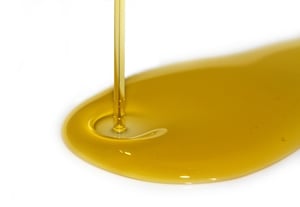This Game Changer Will Have You Replacing Less Efficient Packaging
If a product is of excellent quality, it's only natural that end consumers will want to use all of it. Consider the phrases that make their way into advertising for liquids: “Good to the last drop”—along with the variety of aftermarket accessories created for fully emptying bottles, jars, and tubes. Getting the full value of a product means getting the full volume of a product, a place where traditional bottles, plastic cubes, jugs, and more have fallen short. Waste also falls under packaging failures—a cracked side, a broken cap, a crushed container. To please your customers, your product needs to arrive intact and demonstrate functionally innovative dispensing mechanisms.
 Bags Are Great, But ...
Bags Are Great, But ...
While plastic bags of liquids have long been a preferred method for complete dispensing of industrial lubricants and greases on demand, those bags can be fragile by themselves. Virtually impossible to store neatly in bulk, their flexible sides and potentially uneven weight distribution make them vulnerable to punctures and falls, and a single leaking bag can coat an entire shipment with unfortunate disruption and compromise efficiency. In addition to physical stock threats, there are also environmental issues to worry about: warehouse temperatures can fluctuate, and without protection, the contents can lose efficacy as they’re exposed to spikes of heat or cold.
Bag-in-box packaging provides the best of two packaging types, giving warehouses and businesses a predictable, stackable shape with clear height and weight storage guidelines to follow. Punctures are far less likely, and your product gains an additional layer of protection against ambient temperatures. Use directions, cautions, ingredients, and other important information can also be easily printed and read on boxes, as well as providing an opportunity for enticing reorders through branding.
Bag-in-Box for Consistency Success
In the grease and lubricant industry, regulations come into play when transporting or storing product. Boxes are easy to store on shelves of the proper height, and easy-to-clean grid-work shelves won't cause them to sit at angles or unevenly, unlike bottles, cans, and jars. Bottles are simply less easy to contain and store, and problems like splash back and constant contact with sides, handles, and caps can potentially impact the contents.
Bag-in-box packaging allows quick and easy dispensing without the box ever needing to leave a shelf, particularly for industrial lubes and greases used in smaller amounts. Dispensing can be made directly into a clean container for transfer, carefully controlling the amount used for service or procedures. With bag-in-box packaging, there’s also no “glugging”—because gravity and the inner bag spout work together, you'll never end up with a mess or an over-greased project from inconsistent air flow. Ultimately, that means better service for your customers, and a better reputation for your business.
More than Basic Bag-in-Box Benefits!
- Bag-in-box is a replacement for many rigid packages, including cube-shaped inserts, cans, and plastic pails.
- Both pillow and form-fit bags are suitable for use with manual, semi-automatic, and fully automatic fill lines.
- Virtually a flat bag, minimizing shipping and warehouse space requirements.
- Bag-in-box uses significantly less plastic and on average, costs notably less than a similar capacity rigid container, including plastic pails, bottle, and cube-shaped containers.
- Dispenses without surging or glugging.
- Bag-in-box offers excellent quality due to its superior seam strength.
- Bag-in-box fills without air, therefore no foaming or splashing.
Game Changer
Bag-in-box packaging is the game changer the industrial grease and lube industry has long sought out: one that’s clean, convenient, and helpful with regulatory compliance. You’ll be able to use that last drop of product, ensuring that every reorder is one that’s truly needed—not guesswork wondering if you got it all. Easy to carry, easy to stack, and one of the strongest protections against punctured or leaking product, the era of the messy, inconsistent bottle approach to liquid application might just be coming to an end.
UN-Certified
The United Nations has set standards for the classification, packaging, marking, and labeling of dangerous goods, which cover road, rail, and sea transport. CDF’s UN-certified bag-in-box design requirements endure the four rigorous performance tests: drop, stacking, vibration, and cobb water absorption.
Packaging that is UN certified meets all transport regulations for the packing and shipping of dangerous goods—though UN-certified packaging can be used for all materials, whether hazardous or not. This stands true whether the contents are food and beverage, cosmetic, or chemical in nature.
If you’re packaging needs span the following industries and applications, CDF’s Un certified bag-in-box serves them:
- Chemical: adhesives, agricultural, automotive oils, chemicals, coatings, detergents, inks, lubricants, paints, petroleum
- Cosmetic: cleansers, conditioner, cream, liquid makeup, lotion, shampoo, tanning spray
- Food & Beverage: flavorings, purees, sauces, vinegar, beverage base, coffee, dairy, juice, lemonade, tea, water
- Medical
CDF’s UN-certified bag-in-box meets all UN requirements and is certified by a third-party lab following the Department of Transportation guidelines. Click here (or below) for more information on CDF’s UN-certified bag-in-box.

